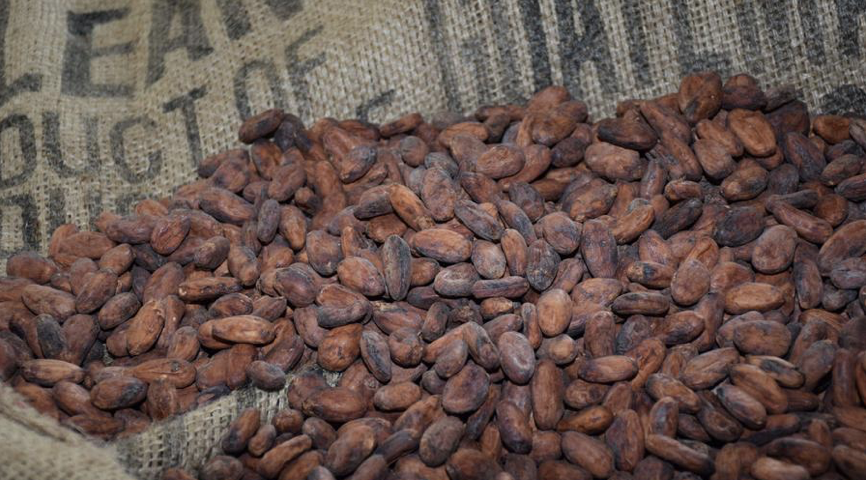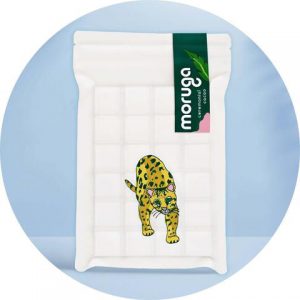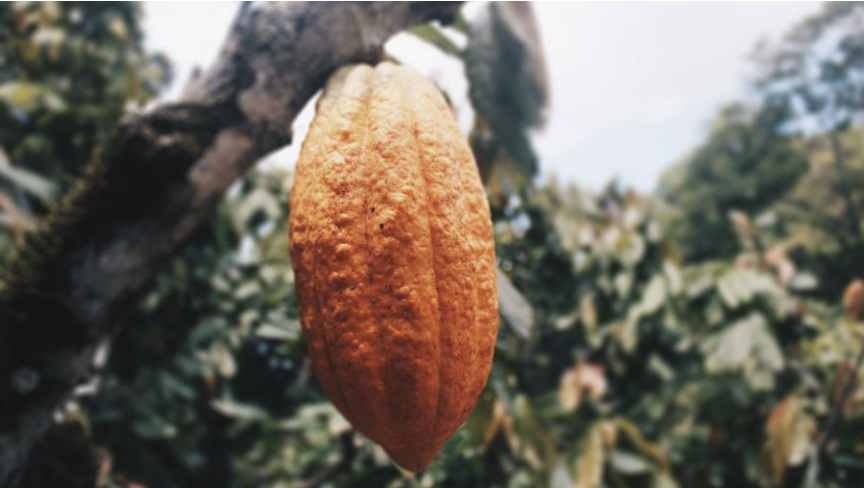Almost anybody loves cacao – in the form of chocolate bars, as a hot beverage or as an aromatic additive to sweets and cakes. But is cacao a sustainable crop? Our partner Moruga Cacao gives us an insight into the most sustainable way of growing cacao in the tropics. And guess what: Trees are the answer.
“Agroforestry” is the key term here and not many consumers have heard about it – yet. While many people opt for organic certified or fair trade options when they shop foods like chocolate or baking cacao, not many people know about the difference between crops that are grown in monocultures vs. such that are grown in agroforestry systems.
In short, agroforestry is a way of combining many different agricultural crops on the same land, thereby strengthening the local ecosystem.
Practically, agroforestry might look like this: The relatively small and tender cacao trees grow in the shade of the much larger teak, coconut or mango trees. The system is already well at work in the coffee industry, where coffee beans derived from such agroforestry systems often bear the consumer market label “shade grown coffee”. The (craft) chocolate industry, with its growing quality awareness, starts following suit.
Benefits of the agroforestry systems are felt on a social, ecological and economic level.
Farmers who grow several species of trees and fruit on their land are less vulnerable to market shifts, plant pests and climate change. Whenever one crop suffers from a bad harvest year, farmers can still rely on their other crops to bring home food, fuel, timber and money from selling their crops.
Birds have been observed to occupy the agriculturally used forests at a similar rate to untouched, wild forests. On one agroforestry farm in Belize (Maya Mountain Research Center), over 150 species of birds were counted – in sharp contrast to not more than 20 species of birds on neighbouring, conventionally farmed land. The same holds true for small mammals and reptiles. They all thrive in the biodiversity provided by mixed plantations.

But there’s yet another benefit to agroforestry: Especially for “aromatic” cash crops, which are planted exclusively for export purposes, a noticeable increase in quality can be reported. “Shade grown coffee” and, similarly, “shade grown cacao” or “cacao from mixed forests/agroforestry” is not only a label ensuring a sustainable production, but one guaranteeing a higher quality product, too. Both plants thrive underneath the shade and rain protection of bigger trees, making them more aromatic and attractive for quality-conscious consumers.
This is the reason why a growing number of craft chocolate makers, Moruga Cacao being one of them, source their cacao beans exclusively from agroforestry systems. And we are happy to have them joining our mission at Active Giving.
What are the effects of cacao on your body and mind?
Quality cacao obtained from agroforestry might have a handful of benefits for the consumer besides fancy aromas, though. Scientists haven’t figured this one out entirely yet, but a few studies point to the direction of significantly higher amounts of stimulants inside shade grown cacao beans vs. cacao grown on monoculture plantations.
One of these stimulants is Phenylethylamine (PEA), which is structurally similar to amphetamines and is currently being researched as an antidepressant and an alternative to the ADHD-treatment drug Ritalin. Some cacao beans have been shown to contain up to 8 times as much PEA as others. A possible explanation could be genetics and better growing conditions for shade grown cacao that help the sensitive cacao trees reach their full biochemical potential.
More and more people around the world are discovering the beautifully subtle energy they receive from cacao, as an alternative to coffee and energy drinks. Part of this trend is the re-discovery of rare strains of cacao that have gone nearly extinct (there seem to be over 3000 strains and sub-strains of theobroma cacao) and the increasing opportunities for craft chocolate companies to source cacao beans directly from semi-wild and agroforestry farms.

Jonas Wind, the founder and owner of Moruga Cacao, is confident that the cacao drinking world will see a similar development as the specialty, or third-wave, coffee world. He believes that this is partly due to the much-needed effect of an energizing drink that does not leave you slumped, stressed out and anxious after a half hour. While coffee seemed to have fueled the industrial revolution, he thinks that cacao is going to fuel whatever comes next.
Discover the Moruga Cacao world here and use the code “ACTIVESPRING2021” to get 15% discount on your order.


